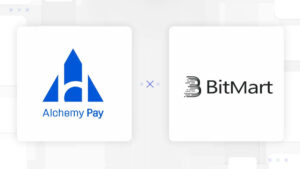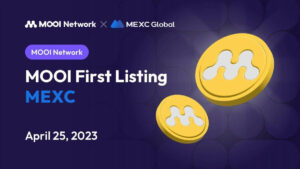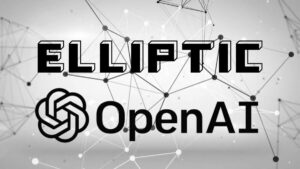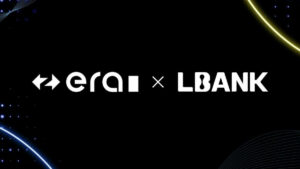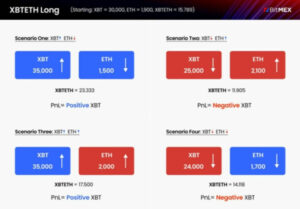Quick Take
Blockchain technology is shaking up the energy sector, offering solutions to outdated infrastructure, enabling peer-to-peer energy trading, streamlining virtual power plant management, and supporting sustainability efforts. With its benefits of immutability, scalability, cost savings, data security, and transparency, blockchain promises to bring decentralization, increase accessibility, and secure the energy grid for the future.
1. The Current State of Energy Infrastructure
The current energy infrastructure in the U.S. is outdated and prone to failure. Realistically, it needs significant modernization — and soon. Otherwise, people risk going without electricity or experiencing more outages. The blockchain is one of the few modern technologies offering a feasible solution.
2. How Blockchain Can Decentralize the Energy Sector?
Blockchain tech decentralizes the energy sector — and supports similar strategies — in multiple ways. Consumers, companies and power grid operators can all experience its impact.
2.1 Peer-to-Peer Energy Trading
A decentralized energy sector powered by the blockchain allows fast, seamless trading. It lets people sell their excess electricity to others instead of back to the energy grid. Removing the intermediaries increases transaction speed, transparency and affordability.
In reality, surplus power is more common than many assume. After all, renewables have a high output despite having unreliable production rates. Considering nearly 30% of all energy generation came from these sources in 2020, many people have extra electricity they can sell.
2.2 Virtual Power Plant Recording
Virtual power plants are digital aggregators of decentralized energy that allow transactions between grid operators, consumers and companies. They’re becoming increasingly popular as demands for an alternative to centralized services grow. In fact, the market value for virtual power plants will reach nearly $6.5 billion by 2028.
Still, they’re imperfect solutions. Virtual power plants are notoriously complex — keeping an accurate record of how, where and when electricity moves typically requires an enormous amount of resources. However, a blockchain can simplify the entire process. When it integrates into the standard model, every transfer becomes a tamper-proof, secure data point in real time.
2.3 Hourly Matching
Hourly matching — also known as carbon-free energy — is a popular way for large enterprises to purchase zero-emission electricity. It allows them to align their purchases to their actual usage, increasing affordability, reducing fossil fuel reliance and minimizing energy waste.
Although the blockchain isn’t a hard requirement for this technology, its integration is key. After all, it gives regulatory agencies, companies and consumers a tamper-proof, accurate record of their sustainability measures.
2.4 EV Battery Supporting
In 2021, there were roughly 11.3 million electric vehicles in the world. Of course, this figure only grows as sustainable transportation technology advances. Unfortunately, the power grid’s capabilities don’t align with the increasing demand. This is where the blockchain comes in.
With decentralized energy distribution, people don’t need to rely on one central supply to charge their vehicles. Instead, they can count on other consumers to fulfill their electricity needs. Grid operators also benefit from this technology, considering it stabilizes demand and reduces the load on power infrastructure.
3. Why Should the Energy Sector Be Decentralized?
The current energy grid needs new features to stay relevant in the coming decades. To put it simply, it’s outdated, vulnerable and inefficient. Considering the electricity demand will grow by almost 50% in the U.S. from 2022 to 2035, a modern solution is all but necessary.
Although the government plans to eventually update this infrastructure, its pace is infamously slow. Truthfully, whatever new technology it uses might not be a match for the blockchain.
The current infrastructure wastes a tremendous amount of energy because it can’t store surplus and has inefficient transmission processes. Between 2018 and 2022, the energy grid in the U.S. lost 5% of all electricity it distributed. While this percentage may seem minor, it represents millions of kilowatt hours of electricity.
Although many people view plain decentralized energy as the solution, it needs technological support to work — and a blockchain-powered model offers the most applications and benefits.
4. The Benefits of Blockchain Technology in the Energy Sector
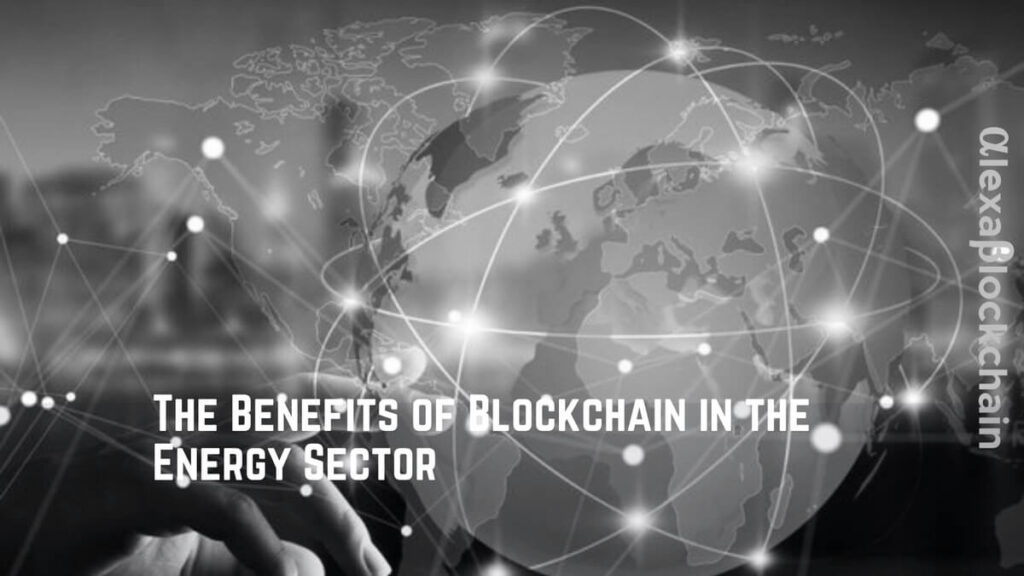
The blockchain provides many unique advantages to the energy sector:
- Immutability: With the blockchain, every data point is permanent. Since no one can alter anything once it enters the system, its integrity is guaranteed.
- Scalability: If countries genuinely want to switch to renewables, a blockchain-powered energy sector is one of the few possible ways. Realistically, standard power grid functions can’t scale with the surplus energy these sources will provide.
- Cost savings: Energy grids will become much more affordable when operators remove intermediaries and minimize administrative costs. On the consumer end, people will have much more flexibility to purchase, store and sell.
- Data security: Since blockchain is a distributed system and can operate using cryptography, consumer data remains secure.
- Transparency: Every consumer can validate energy transactions and monitor trades in real time, providing them with complete transparency. With the blockchain, they won’t have to worry about shareholders skewing numbers to manipulate the market.
- Energy grid security: A decentralized model is far less prone to outages and intentional tampering. Considering power grid attacks increased by 71% in 2022 alone, a transition away from centralized systems is crucial.
Consumers, power grid operators, businesses and governments can all benefit from leveraging blockchain technology in the energy sector.
5. How Does Blockchain Increase Access to Energy?
If people must depend on a centralized system, there will be times when they don’t have reliable access to electricity. Realistically, local power grids won’t always be able to meet their needs — especially if demand spikes or an outage occurs. Also, it simply isn’t capable of meeting the skyrocketing demand for electric vehicle support.
A decentralized energy sector powered by blockchain technology gives people the power to trade, store or transfer electricity whenever they need it. Instead of relying on one central power grid — infrastructure vulnerable to failures and outages — they can operate semi-independently.
The blockchain can also make power more affordable. For example, enterprises can improve data management, optimize energy consumption and reduce overhead costs by incorporating the blockchain and smart contracts into their hourly matching process. Also, consumers can monitor the tamper-proof market to make the most out of each transaction.
6. Blockchain Is the Future of the Energy Sector
With the blockchain, power goes back into the hands of the people — literally. This innovative technology could permanently improve the current grid model and become the standard going forward.
- SEO Powered Content & PR Distribution. Get Amplified Today.
- PlatoData.Network Vertical Generative Ai. Empower Yourself. Access Here.
- PlatoAiStream. Web3 Intelligence. Knowledge Amplified. Access Here.
- PlatoESG. Carbon, CleanTech, Energy, Environment, Solar, Waste Management. Access Here.
- PlatoHealth. Biotech and Clinical Trials Intelligence. Access Here.
- Source: https://alexablockchain.com/how-blockchain-revolutionizing-energy-sector/
- :has
- :is
- :not
- :where
- $UP
- 2018
- 2020
- 2021
- 2022
- 2028
- a
- Able
- About
- access
- accessibility
- accurate
- actual
- administrative
- advances
- advantages
- affordable
- After
- agencies
- Aggregators
- align
- All
- allow
- allows
- almost
- alone
- also
- alternative
- always
- amount
- an
- and
- anything
- applications
- ARE
- AS
- assume
- Attacks
- away
- back
- battery
- BE
- because
- become
- becomes
- becoming
- benefit
- benefits
- between
- blockchain
- blockchain technology
- blockchain-powered
- bring
- businesses
- but
- by
- came
- CAN
- capabilities
- capable
- central
- centralized
- centralized systems
- charge
- comes
- coming
- Common
- Companies
- complete
- complex
- considering
- consumer
- consumer data
- Consumers
- consumption
- contracts
- Cost
- cost savings
- Costs
- could
- countries
- course
- crucial
- cryptography
- Current
- Current state
- data
- data management
- data security
- decades
- Decentralization
- decentralize
- decentralized
- Demand
- demands
- Despite
- develop
- digital
- distributed
- distribution
- does
- Dont
- each
- efforts
- EIA
- Electric
- electric vehicle
- electricity
- enabling
- encourages
- end
- energy
- Energy Consumption
- energy waste
- enormous
- enterprises
- Enters
- Entire
- especially
- eventually
- Every
- example
- excess
- experience
- experiencing
- extra
- fact
- Failure
- far
- FAST
- feasible
- Features
- few
- Figure
- Flexibility
- For
- Forward
- fossil
- Fossil fuel
- from
- Fuel
- Fulfill
- functions
- future
- game
- gives
- Global
- Goes
- going
- Government
- Governments
- Grid
- Grow
- Grows
- guaranteed
- Hands
- Hard
- Have
- having
- High
- HOURS
- How
- However
- HTTPS
- IEA
- if
- immutability
- Impact
- improve
- in
- incorporating
- Increase
- increased
- Increases
- increasing
- increasingly
- inefficient
- Infrastructure
- innovative
- innovative technology
- instead
- Integrates
- integration
- integrity
- Intentional
- intermediaries
- into
- IT
- ITS
- jpg
- keeping
- Key
- Kilowatt
- known
- large
- Large enterprises
- less
- Lets
- leveraging
- load
- local
- make
- management
- many
- many people
- Market
- market value
- Match
- matching
- max-width
- May..
- measures
- Meet
- meeting
- might
- million
- millions
- minimize
- minimizing
- minor
- model
- Modern
- modern technologies
- modernization
- Monitor
- more
- most
- moves
- much
- multiple
- must
- nearly
- necessary
- Need
- needs
- New
- New Features
- no
- numbers
- of
- offering
- Offers
- on
- once
- ONE
- only
- operate
- operators
- Optimize
- or
- Other
- Others
- otherwise
- out
- outage
- Outages
- output
- Pace
- peer to peer
- People
- percentage
- permanent
- permanently
- PHP
- Plain
- plans
- plant
- plants
- plato
- Plato Data Intelligence
- PlatoData
- play to earn
- Point
- Popular
- possible
- power
- Power grid
- power plants
- powered
- process
- processes
- Production
- promises
- provide
- provides
- providing
- purchase
- purchases
- put
- Rates
- reach
- real
- real-time
- Reality
- record
- reduce
- reduces
- reducing
- regulatory
- relevant
- reliable
- reliance
- rely
- relying
- remains
- remove
- removing
- Renewables
- represents
- requirement
- requires
- Resources
- Revolutionizing
- Risk
- roughly
- s
- Savings
- Scalability
- Scale
- seamless
- sector
- secure
- security
- seem
- sell
- Services
- Shareholders
- should
- significant
- similar
- simplify
- simply
- since
- slow
- smart
- Smart Contracts
- Social
- solution
- Solutions
- Soon
- Sources
- speed
- spikes
- standard
- State
- stay
- store
- strategies
- streamlining
- supply
- support
- Supporting
- Supports
- surplus
- Sustainability
- sustainable
- Switch
- system
- Systems
- tamper-proof
- tech
- technological
- Technologies
- Technology
- than
- that
- The
- The Future
- the world
- their
- Them
- There.
- These
- they
- this
- time
- times
- to
- trade
- trades
- Trading
- transaction
- transaction speed
- Transactions
- transfer
- transition
- Transparency
- transportation
- tremendous
- typically
- u.s.
- unfortunately
- unique
- Update
- Usage
- uses
- using
- VALIDATE
- value
- vehicle
- Vehicles
- View
- Virtual
- Vulnerable
- want
- Waste
- Way..
- ways
- were
- whatever
- when
- whenever
- while
- will
- with
- without
- Work
- world
- worry
- zephyrnet





